#King Dagda
Explore tagged Tumblr posts
Text
Dagda: “Marianne, I just don’t understand what you see in him.”
Marianne: “I can’t help it, dad. Bog is just insanely attractive.”
Bog: *cracks neck*
Marianne: “See? Now I’m pregnant!”
Dagda: “What?!”
37 notes
·
View notes
Text
nooooo spiritual alterhuman don't spread pagan misinformation youre so witchy aha
#'he was the king of the dead and was described by julius cesar as a dis pater' oh so we're citing cesar as a reliable source are we?#spoiler alert an dagda is neither king of the dead or an allfather. actually.#dan yips
18 notes
·
View notes
Text

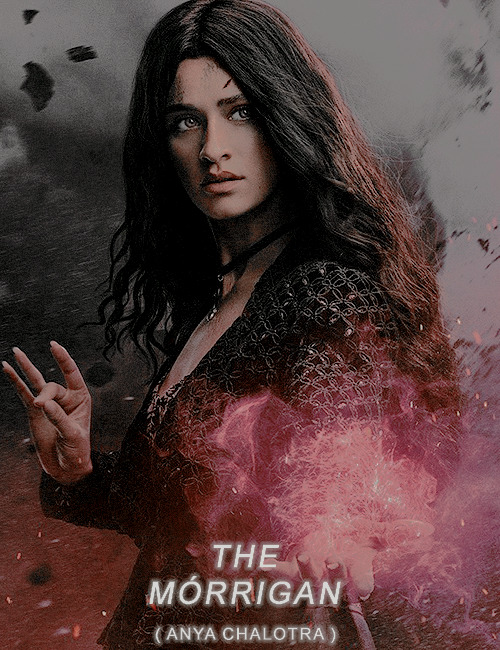
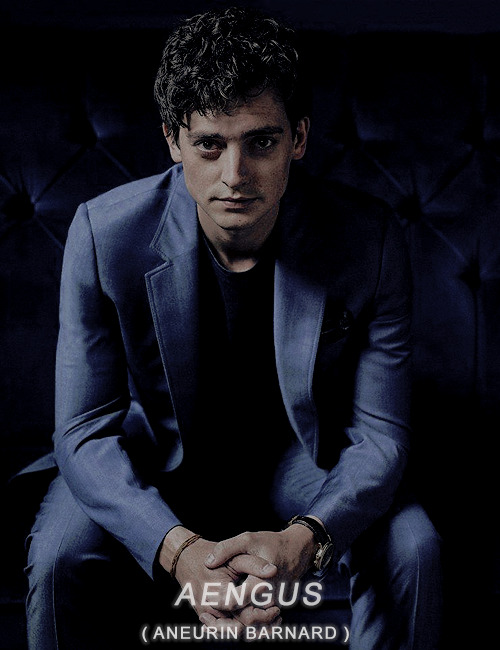

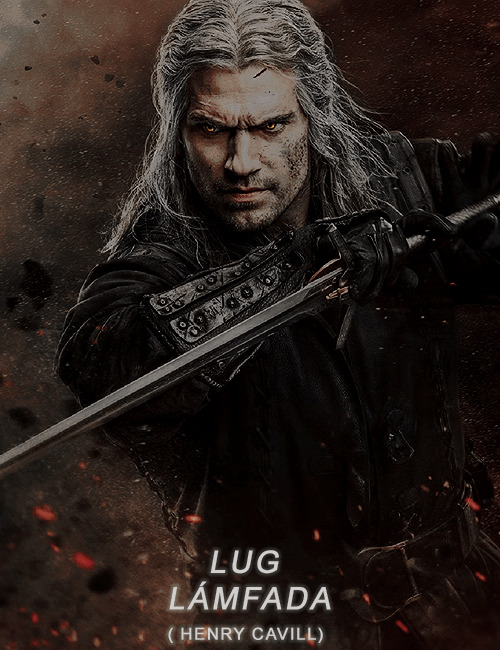
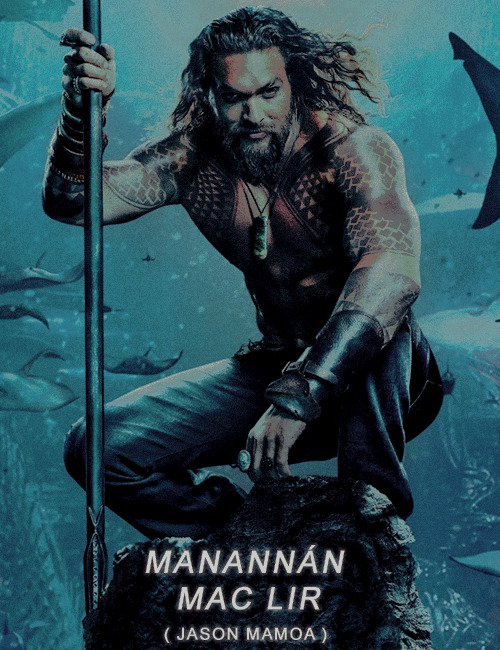


THE GODS OF THE SEELIE COURT & THEIR FCs // pt. 1
Balor - High King / Leader of the Fomorians/enemies of the Tuatha dé Danann
FC: Ian McShane from American Gods
Territory: all of Dubnos - AKA “the Hells”
Manannán mac Lir - Warrior King / God of the sea
FC: Jason Mamoa
Territory: Mag Mell & Emain Ablach ( island paradise of the Otherworld )
Aengus - God of youth, summer, love, and poetry
FC: Aneurin Barnard
Territory: Tír na nÓg
The Dagda - Chief/General of the gods
FC: Magnus Bruun Nielsen from The Last Kingdom
Territory: Mag Mell - land of greatness achieved through honorable death in battle
The Morrígan - Goddess Queen of war, magic, & death
FC: Anya Chalotra from The Witcher (main) Linda Cardellini (alt)
Territory: Mag Mell - land of greatness achieved through honorable death in battle
Lugh - Warrior King & God of the sun & arts
FC: Henry Cavill from The Witcher
Territory: Mag Mell - land of greatness achieved through honorable death in battle
Danu - High Queen of the faeries / head of the Tuatha dé Danann ( the people/children of the goddess Danu)
FC: Charlize Theron from Snow White and The Huntsman
Territory: all of Albios - AKA “the Heavens”
Brigid - Goddess of Healing, Fertility & Protection
FC: Elle Fanning from Sleeping Beauty
Terriroty: Tír na nÓg - paradise / “the land of youth, health, and beauty”
#the mórrigan. | fae queen of war & magic *#the dagda. | the druid king of war *#lugh tag tbh#canon & lore. | the fae *#canon. | world lore *#canon. | the seelie court *#canon. | the aos sí *#canon. | the otherworld *#i should make tags for all of them but nah#too much work atm lol#ooc. | * edits and art !#canon. | gods & goddesses *
18 notes
·
View notes
Text
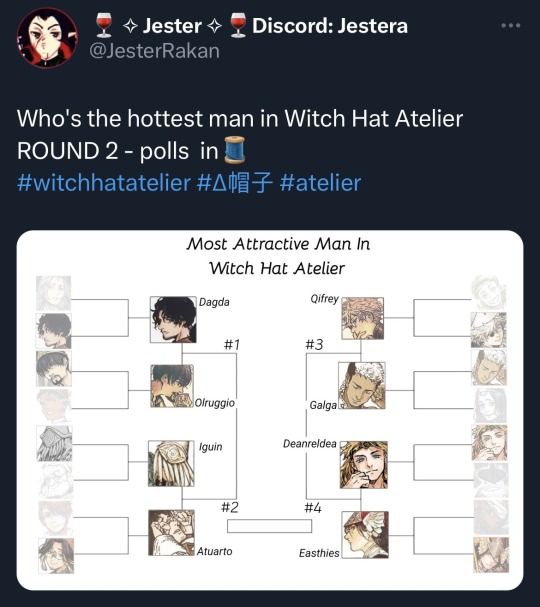
screaming shaking crying LAGLER I WILL AVENGE YOU. what the hell. what the hell. why did people vote easthies over lagler. don’t even look at me. i’m distraught (didn’t know this tournament existed until five minutes ago)
#it should have been deanreldea vs lagler. UGH.#also sorry olruggio my king but i have to vote for dagda#someone should run a hottest man in witch hat atelier tournament on here#not me though i don’t have enough of a witch hat atelier following#i need to follow more wha people but i’m scared
8 notes
·
View notes
Text

Colum's Excalibur
1 note
·
View note
Text
June 2025 Witch Guide
New Moon: June 25th
First Quarter: June 2nd
Full moon: June 11th
Last Quarter: June 18th
Sabbats: June 24th
June Lovers' Moon
Also known as: Aerra Litha, Brachmanoth, Dyan Moon, Flowering Moon(Ojibwe), Honey Moon, Meade Moon, Moon of Horses, Rose Moon & Strawberry Moon(Ojibwe & Oneida )
Element: Earth
Zodiac: Gemini & Cancer
Nature spirts: Sylphs & Zephyrs
Deities: Aine of Knockaine, Bendis, Cerridwen, Green Man, Ishtar, Isis, Neith & Persephone
Animals: Butterfly, frog, monkey & toad
Birds: Peacock & wren
Trees: Maple & Oak
Herbs: Dog grass, meadowsweet, mosses, mugwort, parsley, skullcap & vervain
Colors: Gold, gold-green, orange, purple, red & yellow
Flowers: Lavender, orchid, tansy & yarrow
Scents: Lavender & lily of the valley
Stones: Agate, alexandrite, cat's eye, chrysoberyl, emerald, fluorite, garnet, moonstone, ruby & topaz
Issues, intentions & powers: Abundance, love, marriage, prosperity & relationships
Energy: Balance, change of residence, communication, decision making, education, family relations, full/restful energy, positive transformation, prevention, protection, public relationships, responsibility, strengthening, tides turning, travel & writing
Litha
Known as: Alban Heruin, Midsummer Gathering Day, & Summer Solstice
Season: Summer
Element: Fire
Symbols: Bonfire, besom, cauldron, faeries, God's eys, rosettes seashells, solar cross/sun wheel, spirals, sun symbols. & wands
Colors: Blue, gold, green, orange, red, tan, white & yellow
Oils/Incense: Cinnamon, frankincense, heliotrope, lavender, lemon, lily of the valley, musk, myrrh, orange, peppermint, pine, rose, saffron, sandalwood, spearmint & wisteria
Animals: Bee, bull, butterfly, cow crab, horse & octopus
Birds: Goldfinch, hawk, kingfisher, meadowlark, owl, robin, swallow & wren
Stones: Agate, alexandrite, aventurine,carnelian, cat's eye,citrine, diamond, emerald, fluorite, jade, lapis lazuli, moonstone, pearl, peridot, tiger's eye & topaz
Mythical: Faeries
Food: Ale, berries, bread, cheese, cinnamon foods, edible flowers, garden foods(fresh), grapes, honey, lemons, mead, milk, oranges, peaches, pears, pine nuts, pumpernickel bread, spinach, summer squash, sunflower seeds, sun-dried tomatoes & wine
Herbs/Plants: Anise, basil, betony, cinquefoil, copal, fennel, fern, frankincense, galangal, heliotrope, hemp, holly, ivy, larkspur, lemon, lemon balm, mistletoe, mugwort, mullein, nettle, rosemary, rue, saffron, St John's wort, thyme, verbena, vervain & ylang-ylang
Flowers: Carnation, chamomile, daisy, foxglove, heather, honeysuckle, lavender, lily, marigold, meadowsweet, orchid, rose, wisteria & yarrow
Trees: Beech, elder, hazel, laurel, linden , oak & rowan
Goddesses: Aestas, Aine, Ameratasu, Amaunet, Anahita, Anuket, Aphrodite, Arani, Artemis, Astarte, Athena, Aurora, Bast, Bona Dea, Brighid, Cerridwen, Dag, Dana, Eiru, Eos, Epona, Fenne, Frigga, Gaia, Grania, Gwydion, Hathor, Hera, Hestia, Iarila, Inanna, Ishtar, Juno, Kupala, Mabd, Phoebe, Rhiannon, Saule, Sekhmet, Solntse, Sul, Sunna, Vesta & Yemaya
Gods: Agni, Amun-ra, Apollo, Baal, Balder, Belinos, Bochina, The Dagda, Donnus, El, The Greenman, Hadad, Helios, Hodur, Hu, Huitzilopochtli, Huon, Hyperion, Janus, Jupiter, Kupalo, Lleu, Loki, Lugh, Marduk, Maui, Mithras, Oak King, Odin, , Ogmios, Orunjan, Perun, Prometheus, Ra, Shamash, Sol, Surya, Taranis Thor, Thunar, Vishnu, Woden, Xiuhtecuti & Zeus
Tarot cards: The Empress, The Emperor, The Sun & Strength
Spellwork: Abundance, empowerment, energy, green magic, faeries, fertility, fire magic, growth, love & motherhood
Issues, Intentions & Powers: Agriculture, changes, divination, endings, fertility, life, light, manifestation, power, purpose, strength, success & unity
Activities:
•Charge and cleanse your crystals in the solstice sun
• Make Sun water
• Create crafts with natural elements such as flowers
• Burn a paper with things that no longer serve you or that you are trying to let go
• Invite friends & family over for a bonfire and/or feast
• Gather & dry herbs(and flowers) for the upcoming year
• Clean, decorate & cleanse your altar with summer symbols
• Brew some sun tea
• Circle dancing
• Take a ritual bath/shower with flowers
• Make your own sun dial
• Craft a door wreath out of flowers & herbs
• Enjoy some sunrise/sunset yoga or stretching
• Volunteer at a food kitchen or animal shelter
• Plant trees (especially ones that may provide fruit or berries to feed the wildlife)
• Watch the sunset & say a blessing to nature
• Make flower infused anointing/spell oils
• Eat fresh fruits & berries
• Participate in a handfasting or weddings
• Create shadow art
The history of Litha reveals its deep connections to ancient agricultural societies & their reliance on the sun’s power. Celebrated as part of the Wheel of the Year, Litha symbolizes the balance between light & darkness. Throughout history customs such as bonfires, herb gathering & the construction of sunwheels have marked this festival. Today, Litha continues to be celebrated by various communities, with gatherings at sacred sites & private rituals in natural settings. It serves as a reminder of our connection with nature and the cycles of life.
• The traditions of Litha appear to be borrowed from many cultures. Most ancient cultures celebrated the summer solstice in some way such as the Celts celebrated Litha with hilltop bonfires & dancing. Many people attempted to jump over or through the bonfires for good luck. Other European traditions included setting large wheels on fire & rolling them down a hill into a body of water.
Litha is often associated with Midsummer, a celebration that extends beyond the pagan & Wiccan traditions. Midsummer festivities are observed in many cultures around the world, including Scandinavian countries where it holds a prominent place in their cultural heritage. Midsummer dances, bonfires, & feasts are integral parts of these celebrations, often accompanied by folklore & traditional rituals that honor the sun’s energy & the abundance of nature during this time.
• In the Northern Hemisphere the Summer Solstice occurs when the Sun reaches its highest and northernmost points in the sky. It marks the start of summer in the northern half of the globe. (In contrast, the June solstice in the Southern Hemisphere is when the Sun is at its lowest point in the sky, marking the start of winter.)
Related festivals:
• Vestalia: June 7th -15th-
Was a Roman religious festival in honor of Vesta, the goddess of the hearth & the burning continuation of the sacred fire of Rome. It was held from 7–15 June & was reserved as a women’s-only event. Domestic & family life in general were represented by the festival of the goddess of the house & of the spirits of the storechamber — Vesta & the Penates .
On the first day of festivities the penus Vestae (sanctum sanctorum of the temple of Vesta which was usually curtained off) was opened for the only time during the year, at which women offered sacrifices. As long as the curtain remained open, mothers could come, barefoot and disheveled, to leave offerings to the goddess in exchange for a blessing to them & their family.
For the last day, the penus Vestae was solemnly closed, the Flaminica Dialis observed mourning & the temple was subjected to a purification called stercoratio: the filth was swept from the temple & carried next by the route called clivus Capitolinus & then into the Tiber.
Sources:
Farmersalmanac .com
Wikipedia
Llewellyn's Complete Book of Correspondences by Sandra Kines
A Witch's Book of Correspondences by Viktorija Briggs
Llewellyn 2025 magical almanac Practical magic for everyday living
aianta.org/native-american-moon-names
Llewellyn's Sabbat Essentials: Midsummer
#June#june 2025#witch guide#lovers moon#strawberry moon#witch tips#litha#midsummer#summer solstice#witchblr#wiccablr#paganblr#witch community#witches of tumblr#tumblr witches#baby witch#beginner witch#grimoire#book of shadows#witchcraft#traditional witchcraft#GreenWitchcrafts#sabbat#wheel of the year#Spellwork#witchcore#witch#witches
170 notes
·
View notes
Text
TAROT ASSOCIATED WITH DEITIES AND ENTITIES
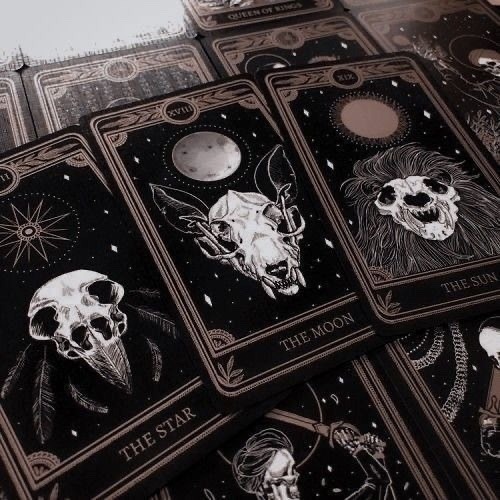


MAJOR ARCANA:
THE FOOL: Pan, Zeus, Dionysus, Loki, and Hermes.
THE MAGICIAN: Hermes, Thoth, and Odin.
THE HIGH PRIESTESS: Persephone, Demeter, Hecate, The Morrigan, Lilith, Selene, Isis, Freyja, Artemis, Ganesha, and Tsukiyomi.
THE EMPRESS: Hel, Aphrodite, Hera, Freyja, Isis, Hathor, Frigg, Demeter, Durga, Astarte, and Ishtar.
THE EMPEROR: Zeus, Lugh, Odin, Horus, Ares, Osiris, and Ra.
THE HIEROPHANT: Dionysus, Osiris, Athena, Thoth, Sestet, Ogma, Horus, Apollo, Hermes, Odin, Brigid, Saraswati, and Ganesha.
THE LOVERS: Aphrodite, Frigg, Aengus, Rhea, Gaia, Demeter, Inanna, Parvati, Hathor, Isis, Brigid, Freyja, Osiris, Cernunnos, Freyr, Dionysus, and Pan.
THE CHARIOT: Thor, The Morrigan, Nike, Athena, Inanna, Astarte, Ishtar, Anat, Freyja, Bastet, Durga, Odin, Horus, Sobek, Ares, Set, Apollo, and Bellona.
STRENGTH: Thor, Hestia, Athena, Sekhmet, Bastet, Macha, Brigid, Danu, Isis, Lilith, The Dagada, and Lugh.
THE HERMIT: Odin, Isis, Hestia, Persephone, Hades, Hecate, Cerridwen, Brigid, The Muses, Sarawati, Hermes, and Ogma.
WHEEL OF FORTUNE: Zeus, Hathor, Isis, The Dagda, Ma'at, The Moirai, and Arianhrod.
JUSTICE: Lugh, Aengus, The Morrigan, Nemesis, Inanna, Hades, Themis, Ma’at, Nike, Athena, Zeus, and Forseti.
THE HANGED MAN: Odin, Artemis, Oriris, Persephone, Inanna, Dionysus, Buddha, and Ishtar.
DEATH: Persephone, Hades, Inanna, Ereshkigal, Isis, Nephtys, Izanami, Hel, Freyja, Morana, Seth, Anubis, Osiris, Santa Muerte, Manannan, Odin, Manannán, Thanatos, and The Morrigan.
TEMPERANCE: Artemis, Isis, Nepthys, Iris, Ma'at, Hebe, Apollo, and Vishnu.
THE DEVIL: Lilith, Dionysus, Lucifer, Pan, Set, The Morrigan, Baphomet, Satan, Baba Yaga, Veles, Banshees, and The Horned God.
THE TOWER: Hel, The Morrigan, Kali, Ares, Pele, Sekhmet, Anat, Sedna, Ceres, Shiva, and Chernobog.
THE STAR: Nyx, Aphrodite, Thoth, Hermes, Ishtar, Astrea, Isis, Arianhrod, Inanna, Nuit, Zorya, and Nodens.
THE MOON: Hecate, Santa Muerte, Artemis, Rhiannon, Selene, Hati, Khonsu, Cerridween, Isis, Phobe, Mani, Thoth, Arianhrod, Tsukiyomi, and Chang-e.
THE SUN: Lugh, Apollo, Kupaula, Helios, Brigid, Sol, Artemis, Bastet, Sköll, Athena, Sekhmet, Aine, Freyr, Horus, Aten, Ra, and Agni.
JUDGEMENT: Hades, Persephone, Ma'at, Crisis, Hephaestus, Isis, Kuan Yin, and Horus.
THE WORLD: Demeter, Aengus, Isis, The Dagda, Gaia, Cernunnos, and Green Man.
THE SUITS:
SUIT OF SWORDS: The Morrigan, Freyja, Hades, Odin, Athena, and Hel.
SUIT OF WANDS: Lugh, Hephaestus, Ares, Bellona, Pele, Aine, Brigid, and Apollo.
SUIT OF PENTACLES: Gaia, Demeter, Macha, and Freyr.
SUIT OF CUPS: Poseidon, Aphrodite, Hera, Isis, Boann, and Hathor.
KINGS:
KING OF WANDS: Ares, The Dagda, Zeus, and Apollo.
KING OF CUPS: Lugh, Poseidon, Manannan, Njord, Apollo, and Mac Lir.
KING OF SWORDS: Odin, Tyr, Hermes, Zeus, and Horus.
KING OF PENTACLES: Hades, The Horned God, Freyr, Pan, Cernunnos, and The Dagda.
QUEENS:
QUEEN OF WANDS: Brigid, Hestia, Bellona, and Aine.
QUEEN OF CUPS: Aphrodite, Venus, and Hera.
QUEEN OF SWORDS: The Morrigan, Freyja, Athena, and Themis.
QUEEN OF PENTACLES: Hecate, Gaia, Eostre, Aine, Ceres, Artemis, and Demeter.
KNIGHTS:
KNIGHT OF WANDS: Apollo, Brigid, Lugh, and Bellona.
KNIGHT OF CUPS: Aphrodite, Boann, Isis, and Hathor.
KNIGHT OF SWORDS: Badb, The Morrigan, Athena, Hermes, and Nemain.
KNIGHT OF PENTACLES: Athena, Macha, Persephone, Lugh, Artemis, Demeter, and Ceres.
PAGES:
PAGE OF WANDS: Artemis, Brigid, Apollo, and Athena.
PAGE OF CUPS: Aphrodite and Lada.
PAGE OF SWORDS: The Morrigan, Freyja, Odin, Athena, Nike, and Bellona.
PAGE OF PENTACLES: Athena, Lugh, Apollo, Pan, The Muses, and Hathor.
#fyp#fypシ#fypシ゚viral#fypage#fyppage#tumblr fyp#witchcraft#witches#tarot witch#deity#deity work#divination#tarot#tarotblr#tarot cards#tarotcommunity#info post#information#helpful
254 notes
·
View notes
Text
SMTIV's hilarious extortion mechanic and its meme status in the Japanese fandom

The grey morality of the alignments has nothing against pure greed.
[spoilers for both SMTIV and SMTIVA ahead]
1) Rundown
In Shin Megami Tensei IV, after purchasing the Fundraise App from Burroughs, Flynn will be able to request Macca from foes during battle. -> Foes will give Macca in small increments, at which point you can ask for more or stop talking and accept what you've been given. -> They may become infuriated upon being asked for Macca or repeatedly asked and attack the party. -> Occasionally, they will even simply give up and grant you a large sum.

2) Explanation
The rewards you get from only killing enemies are much more scarce in SMTIV compared to previous titles. Money is needed for buying good gear and filling your demon compendium, so you can understand how pivotal for game completion farming for Macca is in SMTIV. Hence the option for earning much faster through the Fundraise App.
On an additional note, the best way to take advantage of this method is through inflicting the enemy with the bind ailment before asking them, as it'll work 100% of the time with three turns worth of money without a chance of being attacked. Also, since enemies don't have a money limit, you can repeatedly fundraise from the same target as long as it's afflicted with the status.

Comic by みゃべ. This is a redraw of this meme
Flynn's boldness goes so far that not only random encounter demons but even story bosses can be targeted as well, including past companions:


3) Fan response
This uniquely cruel feature shocked Japanese fans so much that Flynn became commonly referred as a カツアゲ王 Extortion King .

@kingyo_neko "I don't think there's a more ruthless extortion king than Flynn. Unlike the first SMT protagonist, who only targeted Temple Knights, Flynn is an indiscriminate street attacker."
@ametoya "Someone said that Demi-fiend was the King of Chaos while Flynn is the King of Extortion."

To such an extent that many became flabbergasted by the contrast of how his personality was handled in SMTIVA:


@Fomalhaut15 "It makes me sick to my stomach to see Flynn, who has been mercilessly extorting his enemies previously, being called a star of hope and a hero by those around him."
@kakougg "The Flynn I know was a guy whose hobby was extorting demons, I don't think he was any sort of savior" @kuuusuke009 "The image of Flynn was of a protagonist without personality, but in SMTIVA he has become an eloquent young man, and I thought 'You lying bastard… you took off your pants and tried to stick something up your nose, beat up hunters in the tournament, and even tied up demons and robbed them…!'"

@sanbonosrmkr "Me playing SMTIVA: 'The Flynn I know extorted even the weak, and was merciless even to his peers…! He's a murderer, he's not a sociable, righteous person!'"
@kitaonglacier "Frankly, the only thing Flynn should be respected for are his extortion skills."
4) The junior extortionist continuing the legacy
While Nanashi's negotiation apps decreased in quantity (Dagda probably doesn't want you fooling around compared to Burroughs), Nanashi's greediness doesn't leave the older protagonist to shame.


In fact, the amount of fundraising targets is even bigger than the previous title's, with grunts from Ashura-kai and Ring of Gaea being particular examples of which Flynn couldn't dialogue previously while Nanashi is able to not only talk but do it in a threatening tone:


And if you thought that becoming a savior made Flynn give up on his old ways, you couldn't be more wrong! Flynn's (in)fame regarding stealing only became stronger with SMTIVA's release:
5) Flynn and Nanashi's fund partnership
Translation of SMTIVA's official guide, page 45:

> Additional funds provided by Flynn
While accompanying you in the Bonds or Massacre Route, Flynn will provide additional funds if you're successful in fundraising.
You can earn more money in the Bonds route, however Flynn will only follow you in YHVH's Universe. In the Massacre route, you earn less money but Flynn will accompany you wherever you go.
When farming for money (whether for the Demon Compendium or to purchase equipment), it's a good idea to make use of Flynn.

> Conditions for Flynn to acquire additional funds
Route | Occurence conditions | Effect
Bonds route | Give the fishing hook to Flynn and it will always activate when Flynn is in-battle inside YHVH's Universe | 1.5 times the amount of money earned per successful fund
Massacre route | Activates with probability of 50% after fund. If the enemy becomes affected by the bind status, it will definitely be activated. | 0.5 times the amount of money earned per successful fund
[Recorded usage of both routes (please click to zoom in!). Asahi is the best partner for fundraising as she's the only one that won't hurt the enemy which means it'll stay alive for much longer to suck it dry.]
Fans absolutely couldn't leave this feature uncommented:

@atumiko "Whenever he acted all cool I'd be like 'I don't know such a beautiful Flynn... who the heck is this guy...' But when he started doing his extortion thing, I realized 'Ah... this is the Flynn I knew...'
Flynn not only hunts after targets to steal from but also occasionally gives you pocket money that must come from his pillaging. I think it's not right to praise this guy as a savior"
@mousugu26 "I was shocked when Flynn started raising my funds. It's unprecedented for the protagonist of a previous game to be treated like a mugger. So it's canon after all?"

@shibakani3baisu "I love Bonds Flynn's gentle voice when mugging..."
@0225And "I think I'd be happy if Flynn-senpai put me in a bind state then mugged me gently and pleasantly with his handsome voice."
@kitaonglacier "Flynn in SMTIV mugs with a dirty look on his face, but Flynn in SMTIVA mugs in a gentlemanly way.
The sequel made him ooze so much gentleness to the point of even turning him into the kind of person who gives the money they extorted to their junior."
@tohuyasan "I like how Flynn seemed to want to say 'You're still lenient, Nanashi' to Nanashi's extortion. #don'tyouhaveanymoreanymore*"
* Fans love to quote まだあるんじゃないか" (don't you have anymore?) and それだけかい (is that it?), the two sentences Flynn say during fundraising

@maida0493 "Flynn is the best, he doesn't forget his spirit of extortion even after becoming a Godslayer… He rips off his opponents with such a deep voice…"
@yokarebing "In my opinion, Flynn's voice when extorting doesn't sound threatening. It's a normal and soft voice that gives the impression he's smiling while doing it, which makes you feel he's a pro at this.
Flynn helps you with stealing funds so it's the best, I do nothing but mug people at this point. I don't care about YHVH, I just want to keep extorting others with Flynn for the rest of my life"
6) Fan names
The most popular fandom term that has been used since SMT4 is 緊縛ファンド kinbaku fando (bondage funds) for when you fundraise targets inflicted with the bind ailment. I once saw a Western fan referring to it as "Bind Fund" so there's your ENG equivalent
When referring to Nanashi receiving additional fundraising from Flynn, fans say 追いファンド oi fando (mugged funds). As shown above, the term used in the official guide is フリンによる追加ファンド Furin ni yoru tsuika fando (additional funds provided by Flynn). The nickname comes from turning 追加 tsuika (additional) into 追い oi, a shortened form of 追い銭 oisen which is part of the proverb 盗人に追い銭 nusubito ni oisen (additional fee to a thief), a saying for when you give the thief more on top of what was already stolen from you.

Now, to wrap this up...
There's something many wonder...
7) Why the need for the fishing hook in Bonds?

@yokarebing "At Lake Mikado, Issachar's ghost entrusts you with a fishing hook to give to Flynn as a keepsake ← Got it Give the fishing hook to Flynn ← Got it You are now guaranteed to get an additional extortion when extorting demons ← Why"
@nobe0202 "Why does Flynn, who was born in the Eastern Kingdom of Mikado and lived a farming life in Kiccigiorgi, started extorting and currying favors as soon as he put on the Gauntlet?"
@kitaonglacier "That's probably a custom in his hometown as a form of a greeting"
@hnskk_ancyd "Flynn, a child that becomes an extortionist with an old playmate's memento"

@kuuusuke009 "I wonder if it was Issachar who taught Flynn how to extort money... ('w' ; )"
@Dunamis_Anthrax "Could it be that he had memories of extortion with Issachar and started doing it because he missed them?"
@vernogame "Issachar is the man who taught this devilish savior such a skill... Just how frightening is he...?"
@kuuusuke009 "Nanashi: 'The master who taught Flynn how to extort money must be a scary person.'"

Comic by カイザー. Please don't share publicly my translation, as it could upset the original artist.
@vernogame "Issachar,
your will has now been passed on… ( ; ; )"


Epilogue
Jokes aside, one can't help but wonder... does the fact that both Flynn and Nanashi come from humble backgrounds give a nuanced interpretation of the canonicity of this feature?
Nanashi must've seen his own share of fraudsters while Flynn specially would need an extra income to save himself from eternal death.....

157 notes
·
View notes
Text
Okay, I feel like I've developed some kind of weird vision for deciphering hidden language in texts, because as I'm peeling back the layers of the Second Battle of Moytura, I'm seeing a pattern of language emerge that tells a tantalizing forbidden history:
"During a time of widespread political instability, foreign kings rose up and compelled the filid (the secular intellectual class) to subjugate and weaken the druidic class of Ireland. We did exactly as we were told because we were promised prestige and status, but because of our arrogance we've now lost an entire branch of information."
It's possible this operation correlates to the Roman suppression of druidic practices, or maybe it was done to help spread Christianity throughout the island. Either way, it's talking about the mechanics of imperialism.
I know this sounds pretty far-fetched, and it would take me forever to fully unpack how the hell I extracted this, but I have relatively decent confidence that I'm picking up on something intentionally put there. So let's roll with it:
If you're already familiar with the story, this history is represented by the allegory of Bres's kingship: Bres (a figure representing the filid class) subjugates the Dagda and Ogma (representing the pagan religious traditions) at the command of three fomorian over-kings (representing foreign authorities of some kind) who demand high tributes (excessive labor and taxes that led to overwork, starvation, and death). Bres later expresses regret for what he did.
Here's something important to know about the filid: They were trained in the same techniques the druids were, but they employed their skills for secular purposes rather than spiritual ones. Like the druids, one of the things the filid did was guard against information-loss. They memorized poems, stories, history, and genealogical lineages to an absolutely terrifying degree. And like the druids, they knew how to use hidden language to say one thing while meaning another.
Another thing they did was write all the stories we have today about the Tuatha Dé Danann. Unlike the druids, their class survived Christianization and actually occupied a very high social status in Medieval Ireland.
It seems like the filid used the Tuath Dé to represent certain factions, lineages, social movements, and socio-political parties of their time. By describing the relationships these figures had with one another, they recorded the movement of these groups and therefore their history in a way that flew under the radar of Christianity.
Due to surrounding academic clues that would also take me forever to explain, it seems like Bres represents the filid and their traditions. But if that's the case, why cast the patron of your own traditions as the bad guy?
Well...maybe they were being the bad guys.
Remember how I said Bres expresses regret for what he did to the Tuath Dé? He does so after he's booted from his kingdom for being a bad king. When his father asks him what brought him out, Bres says:
"Nothing brought me except my own injustice and arrogance. I deprived them of their valuables and possessions and their own food. Neither tribute nor payment was ever taken from them until now."
Boy howdy does that last sentence make way more sense if we consider he's talking about the druids rather than regular citizens. This admission also stands out considering Bres asks for an army to wage war in the next paragraph, which seems like a completely uninspired anachronism compared to this moment of self-awareness.
There's also evidence to suggest the writer (or writers) didn't like reducing Bres to an archetypal bad guy. They derailed the story at the beginning to preserve a very pagan tale of his conception, all while dropping hints that point to his traditional role as (potentially) the patron of their lineage. This may have been done to preserve some semblance of his original characterization.
The writers also seemed to go out of their way to preserve fragments of many other tales that may have originally been part of the druidic tradition, such as the Dagda's various escapades, different acts of sorcery and medical interventions, and all sorts of strange bits and bobs I will need to take a closer look at.
Again, if preventing information-loss was their job as a social class, then buying into imperialist propaganda and assisting in the decimation of a widespread tradition would have been a catastrophic failing on their part. Clearly the filid alone weren't responsible for the loss of the druids—Romanization would have happened regardless—but if any of this holds any weight, then it's clear they chose the wrong side of history, and regretted it.
60 notes
·
View notes
Text
Important Facts about Samhain from an Irish Celtic Reconstructionist
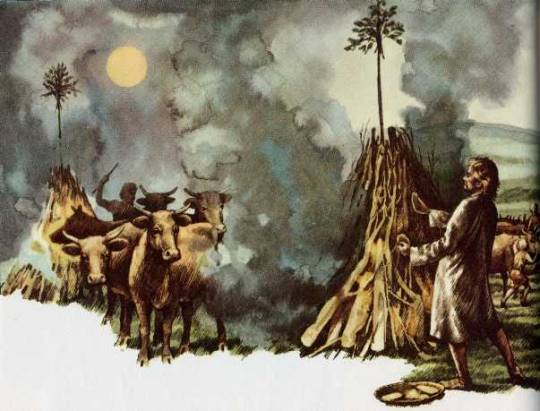
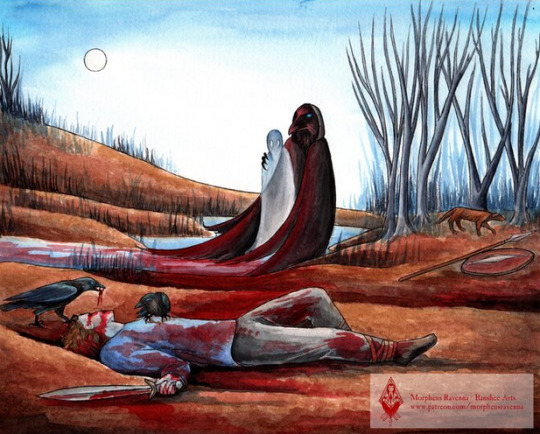

Pronunciation
SOW-in or SOW-een ~NOT~ Sam-han, Sam-win etc.
Dates
Most reconstructionists celebrate Samhain on Oct 31-Nov 1, however some may choose to celebrate on Gregorian Nov 13-14 as this would match the Julian dates of Oct 31-Nov 1. Some also believe that it was a three day festival spanning Oct 31- Nov 2 on which Nov 2 is specifically devoted to ancestral veneration, but there is no specific evidence of this, only possible extrapolation from more modern practices.
Following the Celtic method of days beginning at sunset, regardless of the specific dates you choose to celebrate on your festivities should begin at sunset and end at sunset.
Importance in the Mythos
Ná Morrighan has a strong connection to this time of year thanks to the story of Cath Dédenach Maige Tuired (The Last Battle of Mag Tuired) in which she is found depicted as the ‘Washing Woman’ (sometimes washing herself in the river and other times washing the bloodied armor of the soldiers that would die that day), on the eve of the battle which is also Samhain. The Dagda approaches her and couples with her (creating the ‘Bed of the Couples’ along the bank of river and granting Dagda her blessing in the battle to come). This encounter seems to over emphasize the liminality of the encounter by taking place during the changing of the year and with the couple each standing with ‘one foot on either bank’ of the river.
She and her sisters (Badb and Macha) then use various forms of magic to rain destruction on their enemies (in the form of fire and blood). After the day is won Morrighan speaks a prophecy that describes what is taken by some to be the end of days and others to be the events which will later lead to the Ulster Cycle.
Beneath the peaceful heavens lies the land. It rests beneath the bowl of the bright sky. The land lies, itself a dish, a cup of honeyed strength, there, for the taking, offering strength to each There it lies, the splendour of the land. The land is like a mead worth the brewing, worth the drinking. It stores for us the gifts of summer even in winter. It protects and armours us, a spear upon a shield Here we can make for ourselves strong places, the fist holding the shield Here we can build safe places, our spear-bristling enclosures. This is where we will turn the earth. This is where we will stay. And here will our children live to the third of three generations Here there will be a forest point of field fences The horn counting of many cows And the encircling of many fields There will be sheltering trees So fodderful of beech mast that the trees themselves will be weary with the weight. In this land will come abundance bringing: Wealth for our children Every boy a warrior, Every watch dog, warrior-fierce The wood of every tree, spear-worthy The fire from every stone a molten spear-stream Every stone a firm foundation Every field full of cows Every cow calf-fertile Our land shall be rich with banks in birdsong Grey deer before Spring And fruitful Autumns The plain shall be thronged from the hills to the shore. Full and fertile. And as time runs its sharp and shadowy journey, this shall be true. This shall be the story of the land and its people We shall have peace beneath the heavens. Forever
(based on the translation by Isolde Carmody)
It is also mentioned in Echtra Cormaic that on this festival every seven years the high king would host a feast, it was at this time new laws could be enacted. (but it seems that individual Tuathas or possibly kings of the individual providence may have done this for their territories at Lughnasadh).
It seems to be a time considered especially susceptible to (or of) great change as it is the time which the Tuatha de Danann win victory over the Formorians and take control of Ireland, the invasion of Ulster takes place at this time in Táin bo Cúailnge, in Aislinge Óengusa Óengus and his bride-to-be are changed from bird to human and eventually he claims kingship of Brú na Bóinne at this time of year.
Celebration Traditions
Samhain is the beginning of the “dark half” of the year and is widely regarded as the Insular Celtic equivalent of the New Year. The “dark half” of the year was a time for story telling, in fact in this half of the year after dark is considered the only acceptable time to tell stories from the mythological and Ulster cycle (the Fenian cycle being assumed to be no older than the 12th century based on linguistic dating). Traditionally anything that had not been harvested or gathered by the time of this festival was to be left, as it now belonged to the Fae (in some areas specifically the Púca).
This was also an important time for warding off ill luck in the coming year. Large bonfires would be built and as the cattle were driven back into the community from the pastures they would be walked between these bonfires as a method of purification (the reverse custom of Bealtaine where the livestock were walked between the fires on their way out to the summer pastures). Assumed ritualistic slaughter of some of the herd would follow (though this perhaps had the more practical purpose of thinning the herd before the winter and creating enough food for the feasting). In some areas the ashes from these fires would be worn, thrown or spread as a further way to ward off evil.
Homes would be ritualistically protected from the Aos Sí (Fae or ‘Spirits’) through methods such as offerings of food (generally leaving some of the feasting outside for them), carving turnips with scary faces to warn them off (we now tend to do this with gourds), and smoke cleansing the home (in Scottish saining) traditionally with juniper, but perhaps rowan or birch might be an acceptable alternative. It is likely these would be part of the components used in Samhain bonfires as well, for the same reason.
Lastly based on later traditions as well as links in the mythology this is a time where divination practices or those with the ‘second sight’ were regarded to be especially potent.
Art Credit @morpheus-ravenna
My Kofi
#samhain#irish#irish mythology#irish polytheism#irish paganism#celtic reconstructionism#celtic paganism#celtic polytheism#na morrigna#the morrígan#the dagda#fire festival#blackcrowing#Irish reconstructionist
680 notes
·
View notes
Text
Details and analysis of 3H outfits

There is a reflection of the house color in the uniforms of students. Although the examples presented in the image are non-recruitable characters, when you recruit students, the color of the reflection in their uniforms will change to the color of your chosen house.

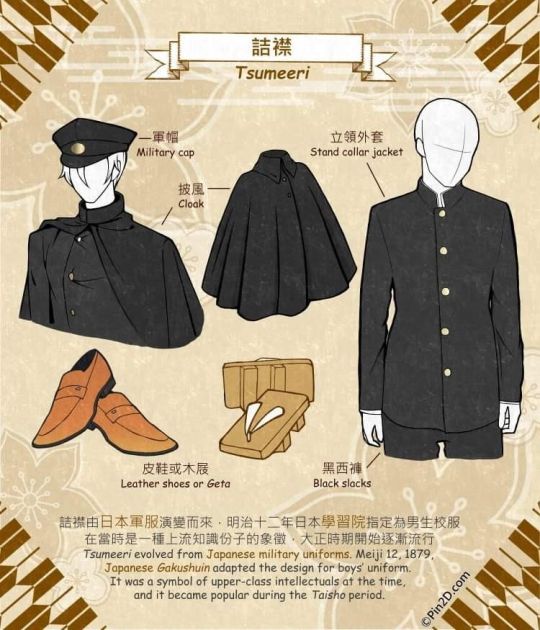
The Byleth academy uniform concept is based on the concept of student uniforms in modern japanese media. Such as the female uniform, which is based on a japanese female student uniform in terms of a hairband, short skirt, andwhite stockings. The male uniform is based on a uniform from the Taisho period.
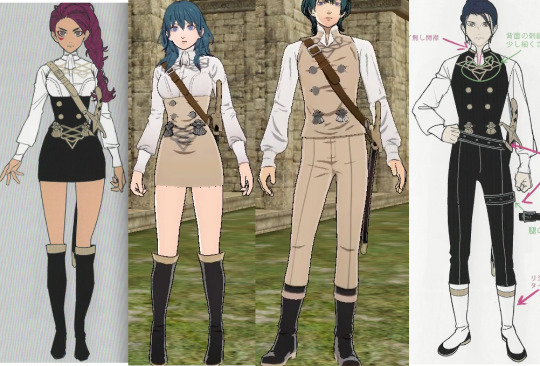
Female summer clothing is based on the Patra's uniform with the color scheme reversed, the reason may be due to Petra's nature that adapts to hot weather. However, male summer clothing is based on Felix's uniform🤔

The evening wear consists of an Aiguillette which symbolizes honour, and a stylized design of Pellegrina which has a rhombus (males) and heart (females) shape on its edges, with a standard CoS pattern on the males sleeves and females skirts. The female skirts specifically are the same design as the nun's which both contain the pattern of Sothis' dress. Since the evening wear is intended to celebrate Garreg Mach's establishment, it is only natural that the design combines a formal uniform with CoS clothing.
Duscur
The children wear clothing similar to ancient Egyptian clothing, but the clothing of the man and woman closely resembles those of northern europe. (However, I may be wrong, so feel free to add to this post if you know more about the type of clothing of the Duscur people)
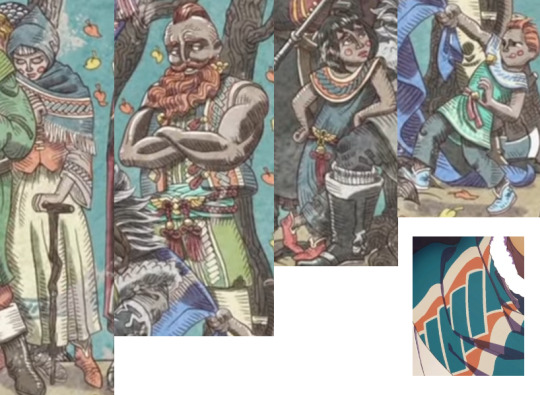
All clothing of the Duscur people of this feature a pixelated pattern, and color schemes of teal, light orange, vanilla, and red cords.
The design of their jewelry appears to be a mixture of wing symbols from cultures such as American Indians, Egyptians, and Persians.
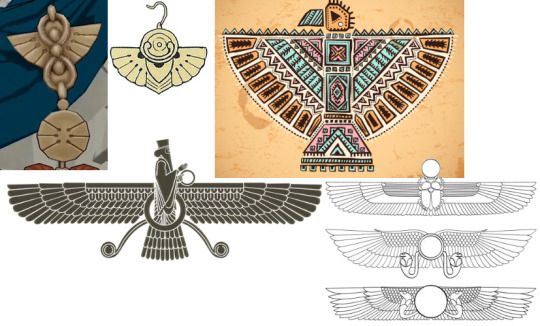
Almyra
This man from the VW end mural wears clothing similar to Nader's, and with a color scheme similar to Claude's and the color purple, which symbolizes royalty in persian culture, he is very likely the king of Almyra.
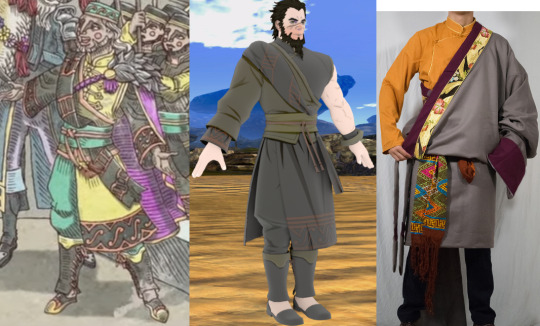
What I found interesting is that although Almyra is inspired by Persian culture, Nader and king's clothing is similar to Tibetan clothing. However, this is not a problem, there is no shame in drawing inspiration from a number of different cultures to make a culture in a fantasy story, as is the case with Duscur.
Dagda
From the clothing of the man on the camel and the helmets of the soldiers, Dagda appears to be inspired by Ottoman culture.

The reason I believe they are from Dagda is because there are many Shamir's design elements at their design.
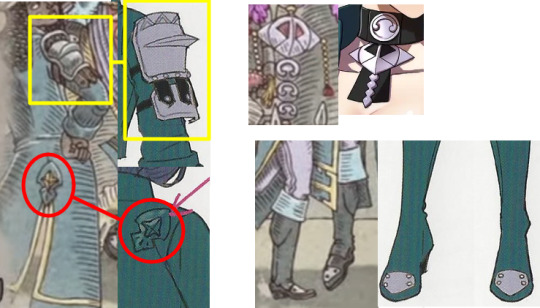
Well, my statement that "there is no shame in drawing inspiration from a number of different cultures to make a culture in a fantasy story," this is an example of the opposite.
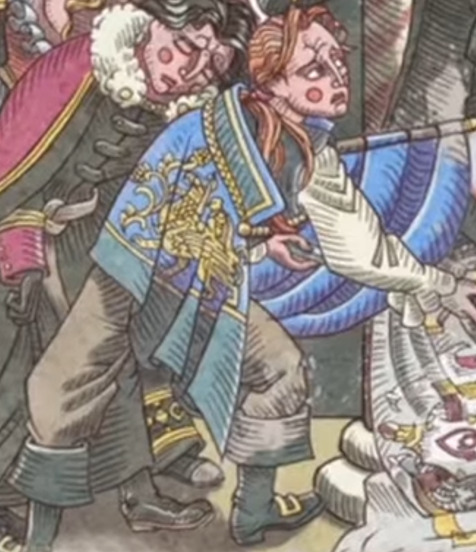
This man from the CF end mural wears the emblem of the kingdom, but his clothing style is that of the alliance. Why🤔
To know the difference between the clothing style of Fodlan countries, read this.
605 notes
·
View notes
Text
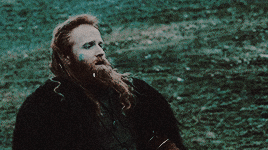


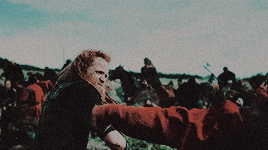
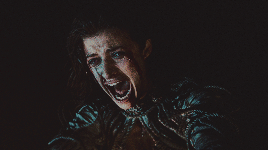
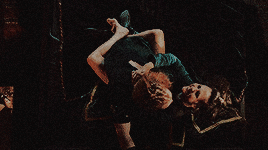
You are my wife. My QUEEN. Act like it ! I may be your wife. But you will never be my KING.
#lmao their relationship is toxic afff#i love it#the dagda. | the druid king of war *#the mórrigan. | fae queen of war & magic *#ooc. | * edits and art !#dynamics. | the mórrigan & the dagda *
1 note
·
View note
Text

Brigit - Druid Goddess Talon Abraxas
Brigit is a ‘pan Celtic’ goddess, who was worshipped by both the Goidelic and Brythonic Celts in the British Isles and beyond. She is a solar deity, who once hung her mantle on a sunbeam. In Celtic mythology, Brigit is the daughter of the Morrighan and the Dagda, the Good God and Chief of the Tuatha de Danaan, the ancient fairy race of Ireland, and the sister of Ogma, who invented the Ogham alphabet. She was the wife of Bres, King of the Fomorians (who were at war with the Tuatha de Danaan). Brigit was said to have been the mediator of peace between the two ancient warring tribes. She was the mother of the Three Gods of Danu – Ruadan, Iuchar and Uar. These three Gods were said to have married the three princesses of Ireland – Eire, Fodhla and Banbha. In other sources, Brigid is the daughter of Boann, the Goddess of the River Boyne in Ireland. Boann (bo fhionn) means ‘white cow’, an association she shares with Brigid. Brigit is primarily the patron Goddess of poets, healers and smiths. She is also a patron of other womanly arts – midwifery, dyeing, weaving and brewing, and the guardian of children and farm animals – particularly cows. The island of Ireland itself is said to be the green mantle of Brigit. She is also said to be the patron of travellers, sailors, and fugitives. She is specifically a patroness to the Druids in her aspects of poetry (Bards), healing and prophecy (Ovates) and blacksmithing (Druids).
44 notes
·
View notes
Text
a guide to the witch’s sabbats
This honestly took a lot longer than I thought but here’s my post on each of the Sabbats
POSTER’S NOTE: I will be posting the dates for each Sabbat when they are celebrated in the Northern Hemisphere and the Southern Hemisphere
•Imbolc
Northern Hemisphere: February 1-2
Southern Hemisphere: August 1-2
Midpoint between Winter Solstice and Spring Equinox
Fire Festival • Quickening
Animals: bears, ewes, goats, groundhogs, sheep, snakes, wolves
Beverages: beer, milk, spiced wine
Colors: blue, green, red, white, lavender
Gods: Aengus Mac Og, Eros, Faunus, Februus, Freyr, Innus, Lupercus, Pan
Goddesses: Aphrodite, Artemis, Athena, Brigid/St. Brigid, Diana, Gaia, Persephone, Selene, Venus
Foods: butter, cheese, garlic, grains, leeks, onions, peppers, shallots, yogurt
Gemstones: amethyst, bloodstone, garnet, ruby
Incense: basil, cinnamon, frankincense, myrrh, rosemary, vanilla
Plants: acorns, crocus, grape hyacinth, primrose, snowdrops
Symbols: besom, Brigid’s Cross, candles, seeds, Shepherd’s Crook, sun wheel
Magickal Energies: agriculture, beginning, birth, cleansing, courtship, divination, fertility, growth, life, love, protection, purity, rebirth, return of the sun, spring
•Ostara
Northern Hemisphere: held between March 19-22
Southern Hemisphere: held between September 21-23
Spring Equinox
Solar Festival • Growth
Animals: bears, bees, butterflies, birds, goats, rams, rabbits/hares
Beverages: milk, cream
Colors: gold, green, lavender, light blue, pink, white, yellow
Gods: Adonis, Attis, Dagda, Holly King,Oak King, Jesus, Odin, Osiris
Goddesses: Aphrodite, Cybele, Demeter, Eostra, Hera, Ishtar, Persephone
Foods: chard, dairy, eggs, honey, lemon balm, lettuce, marjoram, nuts, seeds, spinach, thyme
Gemstones: agate, amethyst, red jasper, lapis lazuli, moonstone, clear quartz, rose quartz
Incense: cinnamon, dragon’s blood, frankincense, jasmine, myrrh, orange peel, rose, strawberry, violet
Plants: daffodil, daisy, dandelion, honeysuckle, hyacinth, jasmine, lily, primrose, tulip, violet
Symbols: basket, cauldron, eggs, feathers, seedlings
Magickal Energies: balance, beauty, beginnings, birth, cleansing, duality, fertility, life, nurturing, rebirth, renewal, sex
•Beltane
Northern Hemisphere: May 1
Southern Hemisphere: October 31
Beginning of summer
Fire Festival • Rebirth
Animals: bees, bulls, cats, cattle, goats, rabbits, sheep, snakes
Beverages: milk, water, wine
Colors: green, light blue, orange, pink, purple, red, yellow, white
Gods: Apollo, Bacchus, Cernunnos, Cupid, Dionysus, Eros, Frey
Goddesses: Aphrodite, Bast, Brigid, Diana, Flora, Freya, Rhiannon, Venus
Foods: butter, dairy, oat/barley cakes, fresh fruit, herbs
Gemstones: amber, carnelian, emerald, garnet, malachite, rose quartz, pink tourmaline
Incense: vanilla, jasmine, lilac, rose, peach
Plants: daisy, honeysuckle, ivy, mint, primrose, rose, violet
Symbols: bells, bonfire, candles, cauldron, chalice, faeries, flowers, may basket, may doll, may pole, may queen, sun, wool, yggdrasil
Magickal Energies: bounty, commitment, community, divination, divine marriage, fertility, fire, fruition, good fortune, growth, handfasting, happiness, healing, health, joy, life, light, love, lust, mating, maturity, prosperity, protection, sex, summer, sun, vows, warmth
•Litha
Northern Hemisphere: held between June 20-22
Southern Hemisphere: held between December 20-22
Summer Solstice
Solar Festival • Fire Festival • Culmination
Animals: bees, birds, cattle, donkeys, horses
Beverages: fruit juice, herbal teas, mead, milk
Colors: gold, green, orange, red, white, yellow
Gods: Bel/Belenus, Lugh, St. John the Baptist, Holly King, Oak King, Apollo, Dagda, Helios, Ra, Ares, Mars, Zeus
Goddesses: Artemis, Isis, Vesta, Diana, Freya, Aphrodite, Venus, Inanna, Epona
Foods: barbecue chicken, barbecue pork, cheese, cinnamon, eggs, fresh fruit, fresh vegetables, ginger, honey, lemon, lime, mint, nuts, oranges, turmeric, yogurt
Gemstones: amethyst, emerald, jade, lapis lazuli, malachite, gold topaz
Incense: jasmine, lemon, lotus, rose, sandalwood
Plants: basil, chamomile, daisy, dogwood, lavender, mint, mistletoe, oak, rose, saffron, sage, sunflower, thyme, verbena, vervain
Symbols: bonfire, candle, circle, dagger, feathers, oak leaf, sun dial, sun wreath, sword, wreath
Magickal Energies: abundance, blessing, blooming, divination, faery work, feasting, fertility, fire, fulfillment, good health, growing, life, light, love, luck, marriage, maturity, passion, pregnancy, prosperity, protection, repelling evil spirits, success, summer, transformation, unions
•Lughnasadh
Northern Hemisphere: August 1
Southern Hemisphere: February 1 
Midpoint between Summer Solstice and Autumn Equinox
Fire Festival • Harvest Festival • Decline
Animals: calf, phoenix
Beverages: beer, cider, herbal tea
Colors: gold, green, red, orange, yellow
Gods: Adonis, Hermes, Jesus, Lugh, Mercury, Osiris, Vulcan
Goddesses: Ceres, Corn Grandmother, Demeter, Isis, Persephone, Rhiannon
Foods: apples, breads, fish, fruit, grains, honeycomb toffee
Gemstones: amber, aventurine, carnelian, citrine, obsidian, peridot, gold topaz
Incense: chamomile, rosemary, sandalwood
Plants: apples, barley, corn, garlic, marigold, myrtle, onion, sunflower
Symbols: candles, corn dolly, scythe, wheat sheaves
Magickal Energies: agriculture, competition, cultivation, fertility, gardening, growth, harvest, hope, preparation, rebirth, reflection, resurrection, transitions
•Mabon
Northern Hemisphere: held between September 20-22
Southern Hemisphere: held between March 20-22
Autumn Equinox
Solar Festival • Harvest Festival • Harvest
Animals: goose, swan
Beverages: beer, cider, mead, wine
Colors: blue, brown, gold, green, orange, red, yellow
Gods: Adonis, Arwan, Bacchus, Cernunnos, Dagda, Dionysus, Freyr, Hades, Odin, Osiris, Pluto, Saturn
Goddesses: Ceres, Demeter, Freyja, Gaia, Isis, Persephone, Proserpina, Terra
Foods: apples, corn, grain, nuts, pears, pomegranates, pumpkin, sweet potatoes
Gemstones: amber, citrine, sapphire, tiger’s eye, gold topaz
Incense: frankincense, myrrh, pine, sage
Plants: acorns, apples, corn, grain, grapes, gourds, nuts, pinecones, pomegranates, pumpkins, wheat
Symbols: cornucopia, double spiral, scales, scythe, sun wheel
Magickal Energies: acknowledge hard work, agriculture, balance, bounty, completion, crone, harvest, reflection
•Samhain
Northern Hemisphere: October 31
Southern Hemisphere: May 1
Midpoint between Autumn Equinox and Winter Solstice
Harvest Festival • Death
Animals: bats, cats, spiders, owls
Beverages: cider, mead, mulled wine
Colors: black, green, gray, orange, purple, white
Gods: Anubis, Cernunnos, Odin, Osiris, Mercury
Goddesses: Baba Yaga, Hecate, Demeter, Pomona, Hel, Ishtar, Isis, Lilith, Morrigan, Persephone, Rihannon
Foods: allspice, apples, cinnamon, corn, gourds, meats, pumpkins, root vegetables, rosemary, sage, turnips
Gemstones: apache tears, carnelian, smokey quartz, onyx, obsidian
Incense: copal, rosemary, sandalwood, sweetgrass
Plants: calendula, gourds, grains, mugwort, oak leaf, pumpkins, rue, wormwood
Symbols: ancestor photos, bat, black cat, broomstick, cauldron, coffin, crossroads, faeries, ghosts, ghoul, jack-o-lantern, mirror, pumpkin, skeleton, mirror, skull
Magickal Energies: ancestors, astral travel, changes, chaos, courage, crossroads, darkness, death, divination, harvest, honoring the deceased, life changes, memorials, mortality, scrying, séance, shadows, souls, spirit contact, transformation, transitions
•Yule
Northern Hemisphere: held between December 20-22
Southern Hemisphere: held between June 20-22
Winter Solstice • Longest Night
Solar Festival • Rebirth
Animals: goats, pigs
Beverages: mead, mulled cider, mulled wine, wassail
Colors: green, gold, white, red, silver
Gods: Bacchus, Dionysus, Holly King, Oak King, Jesus, Mithras, Odin, Ra, Saturn, Thor, Sol, Apollo, Baldur, Cronus
Goddesses: Ceres, Frigga, La Befana, Ishtar, Skadi, Lachesis, Brigid
Foods: cookies, fruits, pork
Gemstones: bloodstone, orange calcite, citrine, diamond, garnet, ruby
Incense: bayberry, cedar, cinnamon, clove, frankincense, myrrh, pine, sandalwood, spruce
Plants: balsam, evergreens, fir, holly, ivy, mistletoe, oak, pine, pine cones, poinsettias*
Symbols: bonfires, candles, caroling, coal, evergreens, fire, garlands, gifts, lights, mistletoe, ornaments, poinsettias*, reindeer, sleigh, stars, stockings, Sun Wheel, trees, wreaths, Yule Log
Magickal Energies: beginnings, birth, daylight, death, divination, feasting, fertility, good health, good luck, growth, life, life cycle, light, luck, miracles, rebirth, resurrection, return, sacrifice
*I feel as if it’s important to note that the name “poinsettia” is the colonized name of the plant cuetlaxochitl, as the plant is native to Mexico and has roots in Aztec culture. It was introduced to the United States in the 1820s by Joel Roberts Poinsett, who was an American ambassador to Mexico at the time and is where the name “poinsettia” comes from.
#witchy#witch community#witchcraft#witchy tips#witch community tips#sabbats#imbolc#ostara#beltane#litha#lughnasadh#mabon#samhain#yule
31 notes
·
View notes
Photo

The Mórrigan
The Mórrigan (also Morrighan, Môr-Riogain or Morrigu), usually referred to with the definite article, was a great warrior-queen goddess in Irish-Celtic mythology. She was most associated with inciting war, then stirring up the fury and frenzy of battle, and finally, as the bringer of death. The goddess was able to take any form of living creature she wished and she helped bring about the demise of the hero-warrior Cú Chulainn after he spurned her many attempts to seduce him as different animals. Her coupling with the Dagda, another major warrior-god, was an important part of the Samhain festival which the Celts celebrated to mark the beginning of a new year.
Names & Associations
The name Mórrigan, which may have several variations of spelling, means 'great queen', 'phantom queen', 'queen of nightmares' or, more literally, 'mare-queen'. She may have evolved from the ancient territorial goddess Mór Muman who was associated with the sun and kingship in southern Ireland. She is a war-goddess, and she is particularly associated with the fury of war, hence her 'demonic' nature and another name by which she is sometimes known, the 'queen of demons'.
Mórrigan is closely associated with two other war-goddesses: Badb and Macha (or alternatively Nemain). This trio is collectively known as the Mórrigna. Some scholars suggest that the trio of goddesses are simply different aspects of the Mórrigan as the triple aspect of gods is a common theme in Celtic religion which emphasises the potency of deities. Appropriately, then, all three goddesses are the daughters of Ernmas, the great mother deity, and their father is, in some tales, the sorcerer god Cailitin. The Mórrigan has one son, the evil figure Mechi, who has three hearts, each of which contains a serpent. Mechi's father is not named.
The Mórrigan has a terrible appearance, and it is this and her aggression which have a strong psychological effect on whoever she chooses during a battle. At the same time, the goddess can be sexually attractive. Consequently, the Mórrigan is both a symbol of destruction and fertility. The goddess has certain powers such as being able to predict the future and to cast spells. Even more impressive, she can change her form at will and become a beautiful young girl, the wind, or any animal, fish or bird. The creature she is most connected with is the crow or raven, which the Celts associated with war, death, and inciting conflict. This aspect of the Mórrigan may well be the origin of the banshee, a female fairy that figures in later Irish and Scottish mythology. The banshee foretells death in a household by letting out a loud plaintive wail and, though she is rarely seen in physical form, when she is, she is an old woman with long white hair.
Another figure from Celtic folklore (in Ireland, Scotland, and Brittany) associated with the Mórrigan is the 'washer at the ford'. This figure, sometimes envisaged as a young and weeping female, at others, an old and ugly woman, was considered an omen of death as she would make certain clothes being washed in a river ford the colour of blood. Whoever's clothes were thus marked was thought to be in imminent danger.
When dwelling in this world, the Mórrigan's home was thought to be a cave in County Roscommon in northwest Ireland. This cave was known as the cave of Cruachan and the 'Hell's Gate of Ireland' since it was believed to be a passage to the Otherworld. In one myth, the Mórrigan lures the woman Odras to her cave by having one of her cows stray inside. The goddess then changes the hapless mortal into a pool of water. Cruachan was regarded as the seat of ancient kings of Connacht and has been identified as part of the group of archaeological sites at Rathcroghan in County Roscommon.
Continue reading...
36 notes
·
View notes
Text
it sucks that all the knight parts of arknights ch11 are just not great. i think they're very good at writing the struggles and resistance of ordinary people through the salvation corps and people like miss golding and feist's grandma, and also at like the terror of facing powerful sarkaz in battle and amiya briefly experiencing the ancestral suffering of existing as a sarkaz and stuff like that, so from one scene to another the tension is maintained well enough even if i think the pacing isn't great. except when it's about the glasgow gang. when it's about them there's just suddenly nothing happening.
and it's not unclear what they're supposed to be contributing to the story here: victoria had been falling apart under the selfish greed of its nobility long before the sarkaz occupied the city, and to save victoria requires having a vision of how you want to define victoria, of what parts of victoria can and should be saved. the culture of victoria built much of its sense of honor and justice on the image of its (steam) knights so there is a message in the steam knights being missing and the heir to the throne and her knights being a street gang. what is worth swearing loyalty to as a knight when the difference between the throne and the people, between the concept and the lived reality of victoria is so vast? these are classic knight themes and very easy to work with because of how timeless they are. there is potential too in the contrast between victoria's lost knights (as an ideal warrior that fights to defend its homeland) versus the sarkaz mercenary soldiers (the reality of warriors fighting to reclaim and avenge a lost home) and how people like horn straddle the line. they touch on it briefly when golding laments that the play about the steam knights that she hoped would teach the kids knightly ideals only cements the image of the steam knights as a bludgeon against their enemies.
but every time the focus is on the actual royal heir and her knights they keep telling you the same shit. vina is an important figure. vina has an important choice to make soon. vina has much responsibility on her shoulders. vina has many people putting their trust in her to make an important choice soon because she is important. shit dude we've known that since the game released, we were all waiting for the main story to go to victoria and finally let her do shit, and now 2 chapters of 20+ stages in victoria later she's still not really done anything at all except stand around and have other people tell you how important she is and how she's definitely gonna do something important any moment now. all this effort to get her hands on the royal sword with hardly any indication of siege's own capabilities or convictions as a ruler. everyone in glasgow gang keeps gassing her up and she's just standing there.
so you end up not buying any of the knightly ideals they're talking about because for every time dagda or indra or morgan say they're protecting victoria and its future by sucking up to siege there's a factory worker risking it all and building a doohickey to actually make a stand with. and when you finally find the sword of victoria's kings your path is barred by the last steam knight who still moves through pure strength of will to protect the one thing he can still truly say is "the victoria he fought for", and you're not even obligated to actually fight him. man, what are we even doing here then.
117 notes
·
View notes